Subscribe now and get the latest podcast releases delivered straight to your inbox.
8 Crucial Elements Every Homepage Design Should Have

Jan 15, 2022
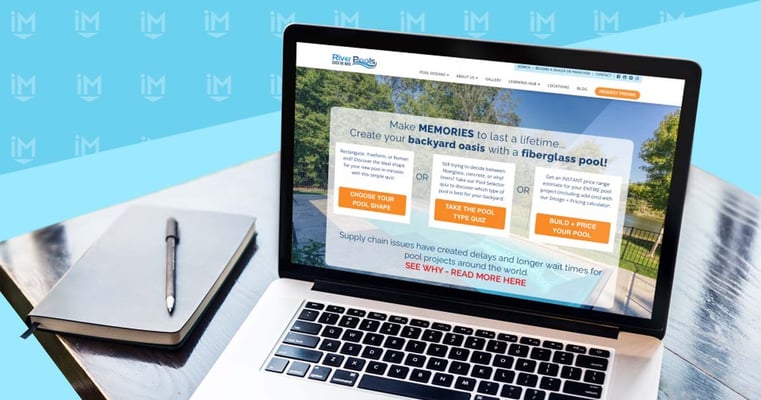
Elements every homepage should include:
- Clear value proposition
- Intuitive navigation
- Clear call-to-action
- Access to your learning center
- Client testimonials
- Overview of services/features
- Contact information
- Simple process plan
People put their best foot forward during job interviews.
They get fresh haircuts, don their best suits, make sure they don’t have spinach stuck in their teeth — long story short, they try to make the best first impression possible.
Every time a new person lands on your website homepage, your business goes through a “job interview” of sorts. People critique what they see in detail, establishing an opinion of you, and determining if you’re worth getting to know further and doing business with.
Is your homepage making the right first impression?
Truth is, most business websites are missing the mark — whether we’re aware of this or not. And this can be extremely frustrating.
Perhaps its traffic is low or it's not generating the leads you need to meet your sales goals. As often the first thing audiences encounter on your website, your homepage can play a huge part in accomplishing these things.
In fact, in They Ask, You Answer, Marcus Sheridan (keynote speaker, author, and IMPACT partner) prompts the question, “How do we get them to page two?”
After thorough research and working with hundreds of clients to improve their website message and layout over the last decade, we have learned what exactly needs to be present on your homepage to get them onto this second page and kickstart your business relationship off on the right foot.
In this article, we'll dive into specifics including:
- How to create homepage messaging that immediately provides value for your prospects
- What your homepage’s No. 1 priority should really be and why
- Elements to include that will make your homepage one of your most powerful selling tools
We’ll also provide examples so you can see how businesses like yours are using their homepages to drive far more traffic, leads, and sales.
How to create homepage messaging that immediately provides value for your prospects
As buyers, when we find services or products we’re interested in purchasing and visit a company's homepage for more information, we are typically looking for particular answers.
Maybe we want to know more about a specific feature, how much the product costs, what makes it different from other options, or if it actually performs as promised.
Whatever the reason, we are looking for information that will help us understand if we can trust this company and should buy from them.
(And as Sheridan says, the only true currency in any business is trust.)
It’s the same for your prospects.
When they come to your website for more information, they don't care to know your whole origin story. They want to know what's in it for them. They want to see how your business solves their problems.
Think of a recent purchase you either made or researched online where you had a positive buying experience.
Did the company take the time to explain how their products and services meet your needs? Or did they use their homepage to explain where they were located, how they were founded, and share some pictures of awards they won?
My guess is it was the former because if all a business does is talk about themselves, that does nothing to help you decide if they deserve your money.
If you want your website to turn prospects into customers, you need to make it about how your business can meet their needs. You should start on your homepage.
Your homepage’s top priority
Most businesses use their company’s homepage to explain who they are and what they do. But this isn’t the main priority for your homepage. Your messaging needs to speak to your audience in a more effective way.
The No. 1 thing your website’s homepage should do is get your visitors to the second page.
When prospects land on your homepage, all that tells you is that they found you, but if you’re able to get them to a second page to, for example, read more about a product or learn about your pricing, you'll be naturally taking them further down the funnel towards making a purchase.
Furthermore, this information will help you better understand their intent and how to market to them better, while also helping your sales team understand how to nurture them in conversation.
Knowing what your leads are looking for will improve your sales process and help your team add more context to all of your interactions.
So, how can your homepage help get people onto page two?
Elements every website homepage should have to build better traffic, leads, and sales
What should actually be on your homepage can vary, but there are several elements that every website homepage needs to have regardless of audience or industry:
1. A clear value proposition
Tell your visitors exactly what you do with a clear, easy-to-find value proposition. This may seem like a no-brainer, but you would be shocked at how many websites out there don’t have one.
If people don’t have an understanding of what your company does, who it does it for, and how it does it differently, they are not likely to stick around to find out any more. Set the tone early with a brief, focused value proposition.
Just remember to keep it clear, to the point, and customer-centric. The StoryBrand Framework to messaging is a great place to start.
2. Intuitive navigation
Your navigation should be easy to understand and use for even a first-time visitor to find what they need.
That means it should be fairly intuitive and keep in mind the key actions someone would want to take on your website. For example, if your blog is your most highly trafficked page, make it easily accessible through your navigation.
Here’s what IMPACT client La-Z-Boy Southeast’s navigation looks like:

The company knows anyone who visits the site likely wants to see what their furniture offerings are, where they are located, and how they schedule an appointment, and all of those are easily accessible in the top navigation.
The homepage even includes a search bar should you not be sure where to go.
3. A clear call-to-action (or two)
When someone arrives on your homepage — or any page on your website — it should be clear what action you want them to take next.
On your homepage, this is usually a “top-of-the-funnel” action, such as subscribing to your blog, and/or a “bottom-of-the-funnel” action, such as requesting a consultation.
Sit down with your team and decide what one or two actions you really want people to take when landing on your site. Having more than this will only confuse your visitor and clutter their buyer’s journey.
4. Highlights of your content (or learning center)
Since your content is the heart of any inbound marketing strategy, encourage people to view and subscribe to your content by highlighting it on your homepage.
Your blog articles, webinars, podcasts, and other content show your expertise and help you build trust. They also offer users a low-risk option to convert and start a relationship with your brand.
At IMPACT, we usually recommend that clients house all of their content in a hub called a Learning Center.
With this in mind, consider adding a subscription box with a lead magnet or simply including a live feed of the most recent content in your Learning Center, like IMPACT client AIS does.
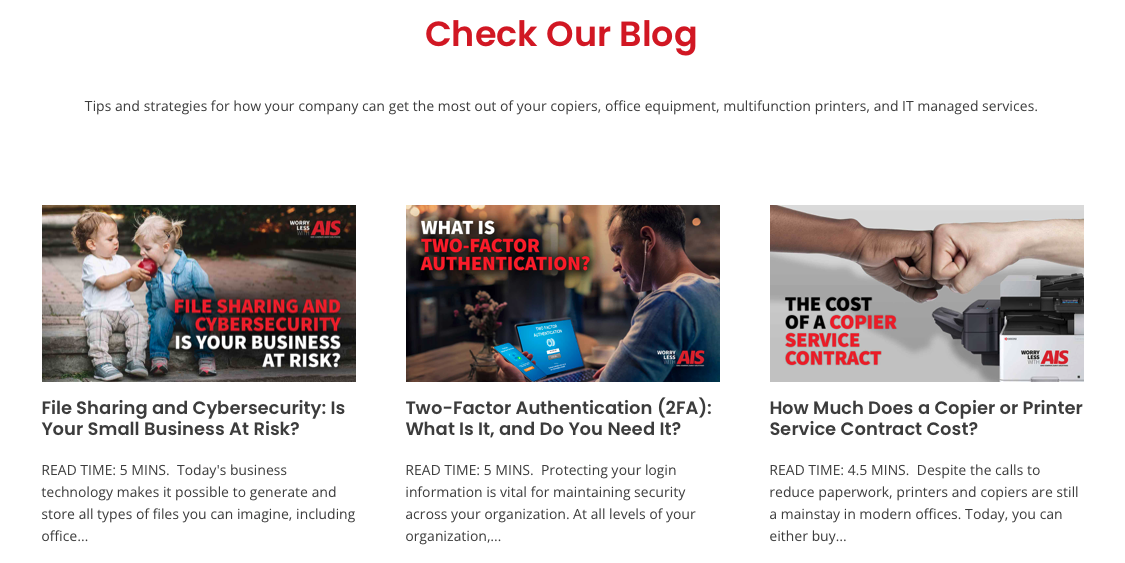
5. Client Testimonials or Social Proof
Research shows that 79% of consumers trust online reviews and testimonials as much as personal recommendations from their friends or peers. So, if your company has positive reviews from your previous or current customers, capitalize on them.
Let website visitors and potential customers know that you’re not just boasting about accomplishments or the claims you make by showcasing your best case studies or reviews. Highlight them in video interviews (one of what we call The Selling 7) or detailed narratives with data to support the impact you made on them.
Testimonials and other social proof build trust and let people know they can feel confident in choosing you. Here's how we tackled this on the IMPACT homepage:
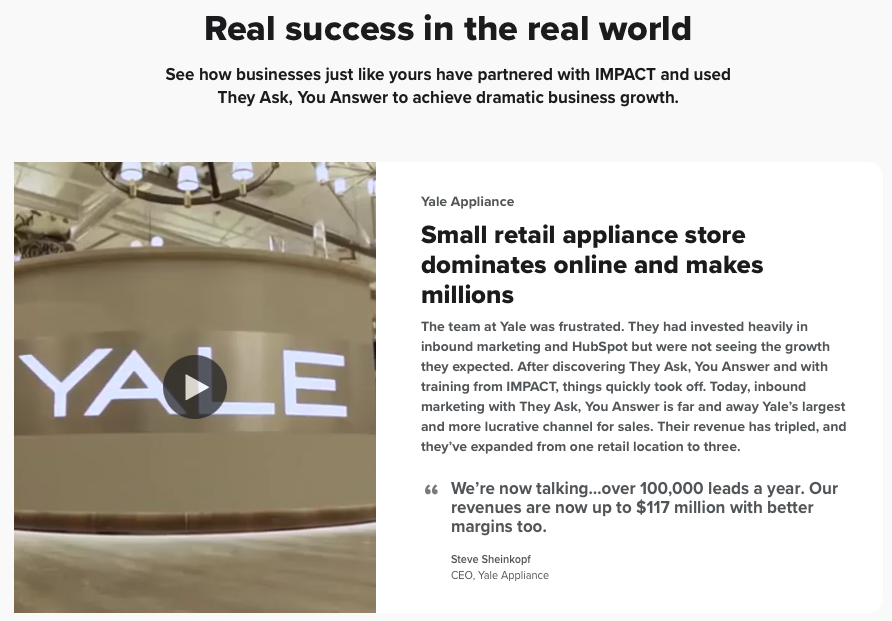
6. Overview of services and features
While you don't want to go into detail about your product or services on your homepage, it's still important to include a brief summary to reinforce to the audience that you have what they are looking for.
An example of this done well can be seen on the homepage of IMPACT client Presbyterian Senior Living.
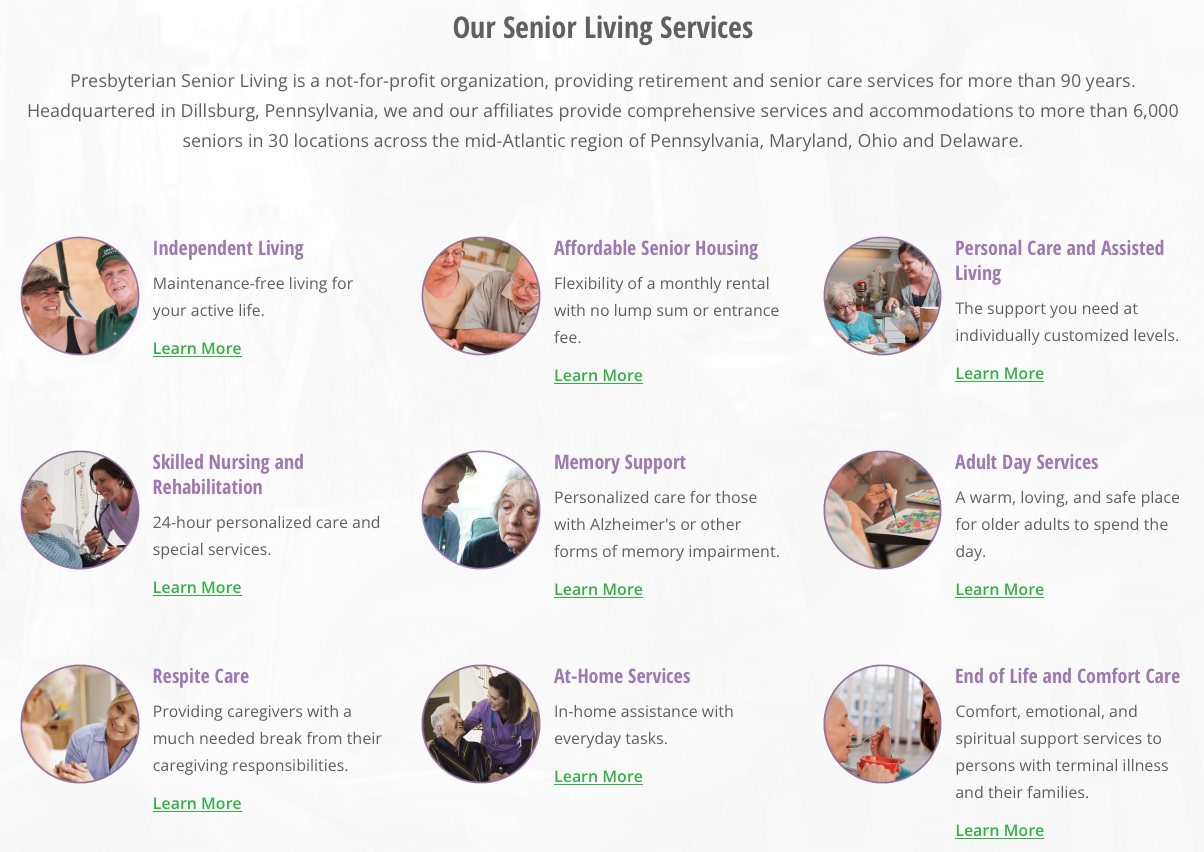
Having product or service information present on the page gives you a place to link visitors off to what they're looking for and also helps your page rank higher for those services in search engines.
7. Contact information
How many times have you been in need of tech support or customer service, but couldn’t find a phone number on the website to save your life?
Don’t put your prospects in the same position.

Visitors should be able to find your contact information easily on your homepage.
Most commonly found in the footer (like in the example from the River Pools website above), your homepage should include a mailing address, email address, and phone number in case someone is interested in reaching you. It's also smart to include social media links and live chat information should someone need more immediate attention.
People want to work with people.
Having this information readily available offers comfort by letting people know they can get ahold of someone if need be. This also adds credibility, by making it clear that this is the homepage of a legitimate business.
If you’re worried about being on the phone all day, establish “help hours” or even consider a live chat. This article will help you weigh the pros and cons.
8. Simple process plan
When you lay out a simplified version of the steps your prospects need to take in order to buy from you, it clarifies what they need to do and makes working with you seem easy.
Take for example what IMPACT client Egyptian Workspace Partners does on their homepage:
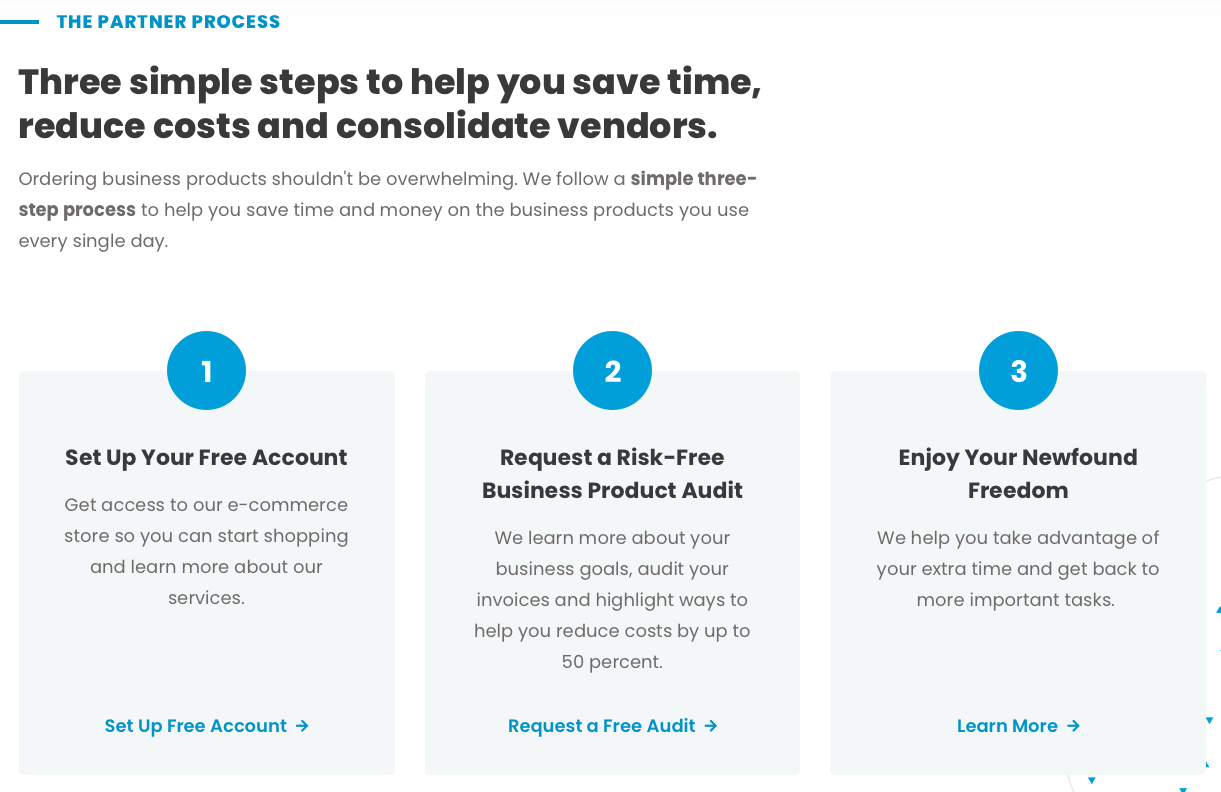
This module on their website spells out exactly how prospects benefit from initiating the process (they will save time, reduce costs, and consolidate vendors) and shows three easy steps they can take to get there.
This helps people take that next step and engage with your business further instead of leaving your website confused.
Considering a website redesign?
All of these tips come from our award-winning inbound marketing framework They Ask, You Answer, which you can learn more about on our website design and development page.
This approach to homepage design will have your prospects reaching out to you and getting excited about your products and services like none other.
To learn more about how, visit our They Ask, You Answer video resource library to explore a large collection of free videos on creating a more effective website, or set up a time to talk to one of our advisors who can help answer any of your questions.
The best part? You can implement these tips on your own today — and be well on your way toward creating a homepage that drives incredible results.
Free: Assessment